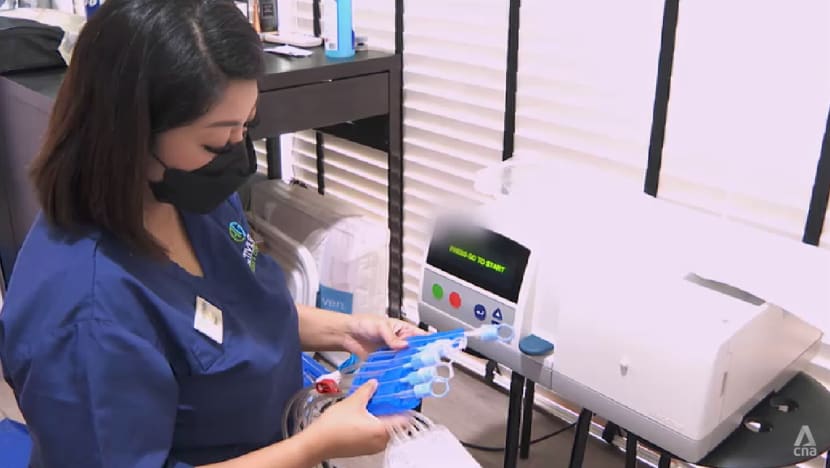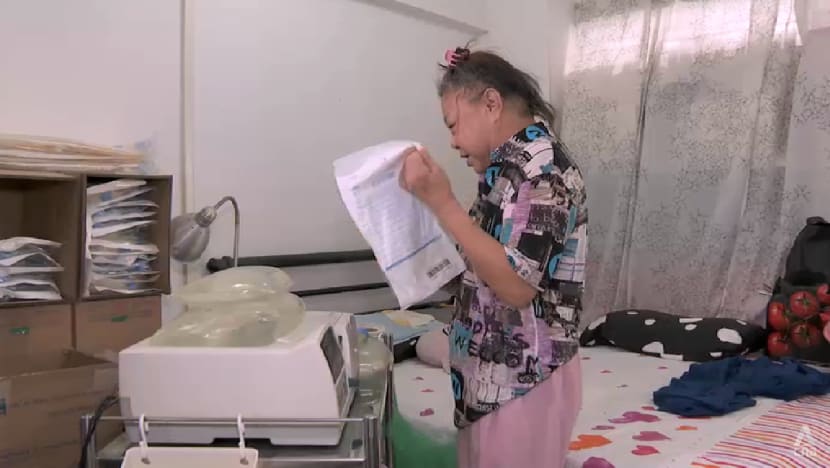More kidney patients seek home dialysis services; one provider sees demand nearly triple in a year
Six new patients are diagnosed with kidney failure in Singapore every day.

A dialysis machine being prepared. More kidney patients in Singapore are seeking home dialysis services, with one provider seeing demand almost triple over the past year.

This audio is generated by an AI tool.
SINGAPORE: More kidney patients in Singapore are seeking home dialysis services, with one provider seeing demand almost triple over the past year.
This comes as kidney failure, also known as end-stage renal disease, is on the rise here. Every day in Singapore, six new patients are diagnosed with the condition.
The demand for home dialysis services is in line with a national push to enable more seniors to be cared for at home, said observers.
DOING DIALYSIS ANYTIME AS REQUIRED
Kidney dialysis patient Laurencia Chew made the shift from centre-based dialysis to home care four years ago.
The 65-year-old, who was diagnosed with kidney failure in 2010, now administers her own dialysis daily.
She said home care has allowed her to do her dialysis anytime she requires it, even late at night in the comfort of her own home. This frees up her day and she can “go out for whatever you want to do”, she added.
Home treatment typically involves peritoneal dialysis, where fluid is pumped into the abdomen to remove waste.
Patients and caregivers have to attend about two weeks of training to learn how to do it at home.

For Ms Chew, she is supported by frequent visits from a care team from non-profit organisation Lions Befrienders.
“All the patients on peritoneal (are grouped) together. They have a support group, and then we are supervising the support group,” said Lions Befrienders Service Association executive director Karen Wee.
“So it means that there’s more home-based services and more support for them to age at home.”
With home dialysis, low-risk cases do not need to be admitted to nursing homes, daycare centres or dialysis centres, where there are long waitlists for services.
“For seniors who are able to do the home dialysis, peritoneal dialysis at home … It's only about two weeks of training, and it's very straightforward. They can do this at their own time and this allows for flexibility,” said Ms Wee.
ENSURING PATIENTS STICK TO THE STEPS
The method of doing peritoneal dialysis at home has comparable clinical outcomes to conventional hemodialysis done at physical centres, said observers.
The Ministry of Health (MOH) has also adopted this strategy, given the rising number of kidney failure cases in Singapore and a limit to building new physical dialysis centres.
Patients and their caregivers are assessed on whether they are suitable to be on home dialysis.
Home care provider Active Global offers both direct dialysis care, and training for patients and caregivers. From 2022 to last year alone, it has seen demand triple.
Home dialysis requires patients and their caregivers to operate independently and to troubleshoot when they encounter issues, said Ms Mei Kei Yap, home care manager at Active Global Home and Community Care.
“The success and uptake of home dialysis heavily depends on how comfortable the patients are with the procedure and the technology. By providing better support for them, it will also achieve a better treatment outcome and reduce the infection rate.”
Active Global runs a 24-hour hotline for patients or caregivers who need quick assistance. Its staff also visit patients' homes to check on them.
“We will come to the home and do an assessment to see how they are coping, how are they sticking to all the steps that we have taught them,” said Ms Yap.
“Because (following the steps) is very important, especially when we mention infections. (For instance,) how do they wash their hands? How do they know whether the output of dialysis is good or bad? How do they know when to call a doctor?
“We give them the knowledge that they actually require, so that they don't turn up at the hospital A&E (accident and emergency) for unnecessary admission.”












.jpg?itok=IduGQxVf)







